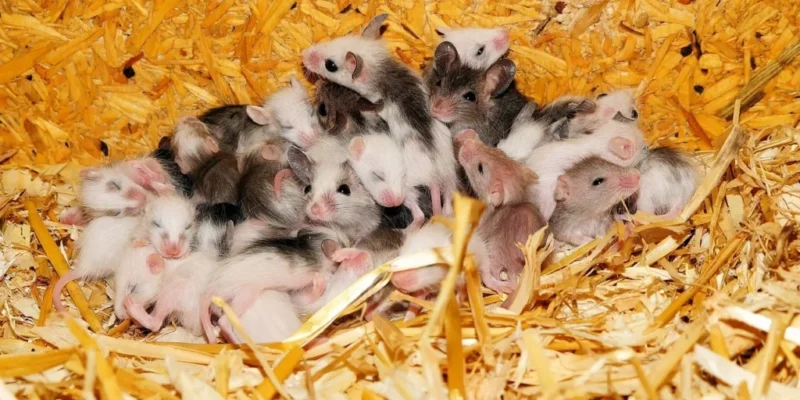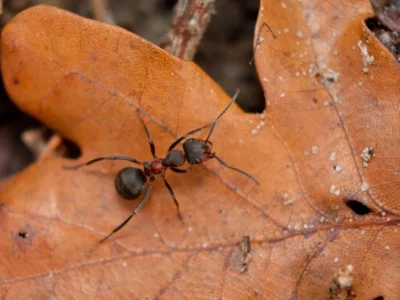New York City has a serious rat problem, and if you’ve ever wondered why these pests seem to be everywhere, the answer is simple: rats reproduce at an alarming rate. A single pair of rats can lead to a full-blown infestation in just a few months, making it crucial to control them as soon as possible.
But just how fast do rats multiply? And what does this mean for homeowners and businesses in NYC? Let’s break down the rat breeding cycle, how quickly an infestation can spread, and what you can do to stop them before they take over.
The Rat Reproduction Timeline
Rats have an extremely short reproductive cycle, which allows their populations to explode quickly. Here’s a look at how fast they can multiply:
1. Rats Reach Sexual Maturity in Just 5 Weeks
Unlike humans or larger mammals, rats don’t take years to mature. Within five weeks of birth, a female rat is already capable of getting pregnant. This means that in less than two months, a single newborn rat can start producing its own litter.
2. Female Rats Can Give Birth Every 3-4 Weeks
A female rat goes into heat every 4 to 5 days, meaning she is almost constantly fertile. Once she mates, her pregnancy lasts about 21 to 24 days, meaning she can have a new litter roughly every month.
3. Each Litter Has 6 to 12 Pups
On average, a female rat gives birth to 6 to 12 baby rats (also called pups) per litter. Some litters can be even larger, with up to 20 pups in ideal conditions.
4. A Single Rat Can Have Over 1,000 Babies in a Year
Since rats breed all year long, one female can produce up to 7 litters per year. If each litter has 10 babies, that’s 70 offspring per year from just one rat. When you factor in that her babies will start reproducing in just 5 weeks, the population can skyrocket exponentially.
How Quickly a Rat Infestation Can Spread
To truly understand the scale of a rat infestation, let’s look at how just two rats can turn into a massive colony in just one year.
The Math of a Rat Infestation
- Month 1: A single pair of rats begins breeding.
- Month 2-3: Their first litter of 10 pups reaches maturity.
- Month 4: The original rats have another litter, while their first litter begins reproducing.
- Month 5-6: The second generation has matured and starts breeding.
- By the End of One Year: The original two rats could have led to over 1,000 rats!
💡 Fun Fact: In ideal conditions, a rat population can double every 3 weeks.
Why NYC Is the Perfect Breeding Ground for Rats
New York City provides everything a rat colony needs to thrive:
✔️ Plenty of food – Trash piles, restaurants, subways, and food scraps offer an unlimited buffet.
✔️ Warm shelters – Rats nest in basements, walls, attics, and sewers to stay safe from predators.
✔️ Few natural predators – Aside from a few hawks, feral cats, and exterminators, NYC rats don’t face many threats.
Because of these conditions, rats rarely struggle to survive, allowing their populations to explode uncontrollably.
How to Stop Rats from Breeding in Your Home or Business
The key to rat control is stopping them before they reproduce. Here’s how you can slow their growth and prevent a full infestation:
1. Seal Entry Points 🏠
- Close holes, cracks, and gaps larger than ½ inch—rats can squeeze through tiny spaces!
- Use steel wool, metal flashing, or cement to block access points.
2. Eliminate Food Sources 🍕
- Store food in airtight containers and keep counters clean.
- Take out the trash regularly and secure garbage bins with tight lids.
3. Remove Nesting Areas 🏚️
- Declutter basements, attics, and storage areas where rats can build nests.
- Keep firewood, debris, and boxes away from walls and off the ground.
4. Use Traps and Baits 🎯
- Place snap traps or bait stations along rat runways (dark corners, walls, or behind appliances).
- Check and reset traps frequently for effectiveness.
5. Call a Professional 🛑
If you see one rat, there are likely dozens more hiding nearby. Professional pest control services eliminate infestations completely, preventing them from coming back.
Final Thoughts
Rats multiply at an alarming rate, turning a small problem into an overwhelming infestation in just a few months. In a city like New York, where food and shelter are abundant, controlling rat populations requires quick action and proper prevention.
🚨 If you suspect a rat infestation in your home or business, don’t wait! Contact our pest control in new york today to stop the problem before it grows out of control. 🚨













Comments